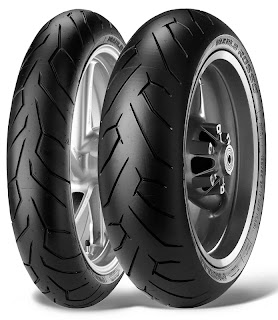
The mode of transport is one of the most
important criterions these days. The vehicles safety is thus essential.
Accidents are also increasing at a quick pace. There are several factors which causes these accidents. The improper
inflation of tyres is one among them. Tyres lose air through normal driving
(especially after hitting pot holes or curbs), permeation and seasonal changes
in temperature. When tyres are under inflated, the tread wears more quickly. Under
inflated tyres get damaged quickly due to overheating as compared to properly
inflated tyres. The under inflation also causes a small depreciation in the
mileage as well. Above all the vehicles running with under inflated tyres can
cause accidents.
Thus
to rectify all these defects we are using self inflating systems. The pressure
monitoring systems in such systems helps in monitoring the tyre pressure constantly.
The system which contains sensors feed the information to a display panel which
the driver can operate manually. The electronic unit controls all the
information. The source of air is taken from the vehicles air braking system or
from the pneumatic systems. Thus it helps in re-inflation of the tyres to
proper pressure conditions.
How Tyres Work
If you're in the market for new tyres,
all of the variables in tyre specifications and the confusing jargon you might
hear from tyre salesmen or "experts" might make your purchase rather
stressful. Or maybe you just want to fully understand the tyres you already
have, the concepts at work, the significance of all of those sidewall markings.
What does all this stuff mean in regular terms?
In this article, we will explore
how tyres are built and see what's in a tyre. We'll find out what all the
numbers and markings on the sidewall of a tyre mean, and we'll decipher some of
that tyre jargon. By the end of this article, you'll understand how a tyre
supports your car, and you'll know why heat can build up in your tyres,
especially if the pressure is low. You'll also be able to adjust your tyre
pressure correctly and diagnose some common tyre problems!
Tyre
About 80 percent of the cars on the road are driving with one or
more tyres underinflated. Tyres lose air through normal driving (especially
after hitting pot holes or curbs), permeation and seasonal changes in
temperature. They can lose one or two psi (pounds per square inch) each month
in the winter and even more in the summer. And, you can't tell if they're
properly inflated just by looking at them. You have to use a tyre-pressure
guage. Not only is underinflation bad for your tyres, but it's also bad for
your gas mileage, affects the way your car handles and is generally unsafe.
Self-inflating Systems
Tyre-inflation
systems have three general goals:
·
Detect when the air pressure in a particular tyre
has dropped - This means they have to constantly (or intermittently) monitor
the air pressure in each tyre.
·
Notify the driver of the problem
·
Inflate that tyre back to the proper level - This
means there has to be an air supply as well as a check valve that opens only
when needed.
Parts of Any Self-inflating System
While the available tyre inflation
systems vary in design, they share some common elements.
·
They all use some type of valve
to isolate individual tyres to prevent airflow from all tyres when one is being
checked or inflated.
·
They have a method for sensing the tyre pressures. This is
addressed in most cases with central
sensors that relay information to an electronic control unit and then to
the driver.
· They have an air source, which is usually an existing onboard source such as braking
or pneumatic systems. When using an existing system, however, they have to
ensure that they don't jeopardize its original function. For this reason, there
are safety checks to ensure that there is enough air pressure for the source's
primary use before pulling air for tyre inflation.
·
There has to be a way to get
the air from the air source to the tyres, which is usually through the
axle. Systems either use a sealed-hub axle with a hose from the hub to the tyre
valve or else they run tubes through the axle with the axle acting as a
conduit.
·
There has to be a pressure
relief vent to vent air from the tyre without risking damage to the hub
or rear-axle seals.
Central Tyre
Inflation System (CTIS)
The idea behind the CTIS is to provide control
over the air pressure in each tyre as a way to improve performance on different
surfaces. For example, lowering the air pressure in a tyre creates a larger
area of contact between the tyre and the ground and makes driving on softer
ground much easier. It also does less damage to the surface. This is important
on work sites and in agricultural fields. By giving the driver direct control
over the air pressure in each tyre, maneuverability is greatly improved.
No comments:
Post a Comment
leave your opinion